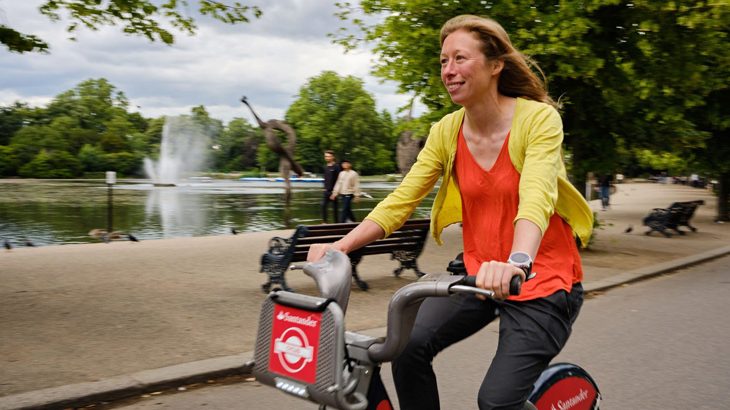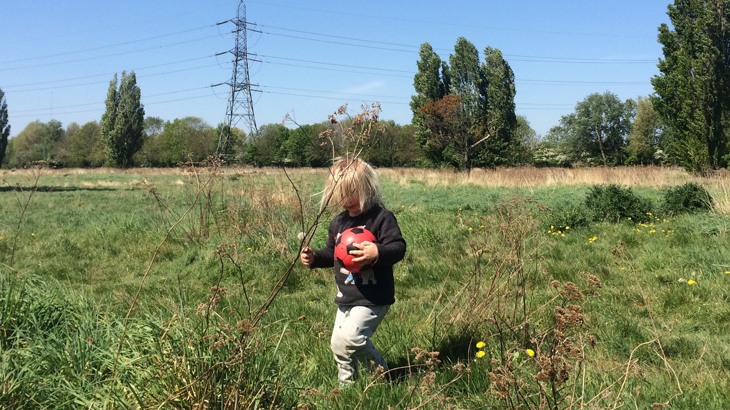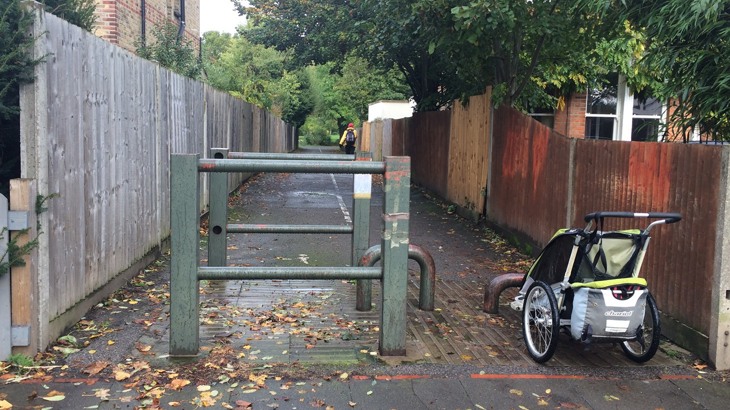Covid-19 has thrown a light on the inequalities in communities across the UK. Our London head of National Cycle Network, Kelly Clark, looks at the critical role public green spaces in urban areas play in maintaining our physical and mental wellbeing. Especially for those of us who have little or no outdoor space of our own.

Green spaces are a lifeline
Green spaces are vital to maintaining good mental and physical health. And public urban green spaces even more so.
If we didn’t know that before lockdown we certainly do now.
In cities, they are our gardens and extended living rooms.
They are part of our transport network, and they are where we play. They help us stay physically and mentally active and healthy.
From evidence to policy to reality
We are drowning in evidence of the importance of green space for public health, especially for urban populations.
And in many cases, this evidence leads to good policy and strategy.
In London, the Mayor’s Transport strategy, Environment strategy and Health Inequalities strategy are all clear on the benefits to the city of our green spaces and the need to protect and improve them.
But do we really treat these places with the same status we give ’proper infrastructure’ like motorways?
Do we ensure everyone can easily get to their local green spaces from where they live?
Our future must be green
In my densely populated London neighbourhood, we’re all crammed in, many in flats without green space, or cramped shared houses.
Overnight our lives changed.
We can no longer mix, wander and go to hug our friends and family.
Now we must physically distance, work from home, and home school.
We can’t reach the edge of the city, so we depend on the spaces close to us.
In moments of my day snatched from working and caring, I’ve been absorbed by how this has changed the way we use our urban green spaces, and what we may be learning from this experience for our future.
Space to breathe and destress
In these places where demand for limited green space is high and supply low, some parks have been closed or had restrictions placed on them.
My local Victoria Park is a green lung serving the borough with the highest level of child poverty in Britain and heartbreakingly shut its gates for a few weeks.
For people feeling the impact of the social, financial and health consequences of the lockdown the most, this park is their only link to nature and all its benefits for physical and mental health.
Space to be human
I must have jogged around my local green spaces hundreds of times, but now I’m seeing them differently.
We’re all making up new rules: avoiding bottlenecks, seeking quieter paths and routes that allow for as much personal space as possible.
Thankfully there is still space to be human.
Greetings with strangers may be further away, but twice as friendly and many times more frequent than usual. I feel a shared sense of appreciation for the spaces that allow us to disperse our stress.
Every outing, my three-year-old and I find somewhere new to stop and play, often somewhere familiar that I’ve never taken the time to notice before.
We keep returning to an unremarkable patch of flat land, an old pitch and putt course left to grow wild that I’ve never given a second glance.
Right now it’s a great spot to find space to play.

Access to urban green space is essential for good mental and physical health, childhood development, and social cohesion. (Ref: London Environment Strategy, page 137)
Space to stop and stare
In our new language of lockdown, walking and jogging and dog walking are ‘allowed’, resting and eating are ‘forbidden’, and playing is forgotten.
I wonder how many people, unable to feel they can use the space in this permitted way are put off.
I wonder how many people are missing out entirely on the mental and physical benefits of green space and fresh air.
Our unequal society
This pandemic is exposing many uncomfortable truths and the inequalities we’ve built into our society.
For those with no green space of their own, urban green spaces are vital, and right now the places that need them most don’t have enough to meet demand.
Even in pre-COVID-19 times, lots of people couldn’t get to them.
Steps, restrictive barriers, narrow paths and poor surfaces can be impossible for people using wheelchairs, pushchairs or other mobility aids.
Despite the Equality Act, our towns and cities are plagued with barriers which individuals can spend years campaigning to get removed.

Barriers are stopping us from easily accessing our much needed green spaces.
Fear of ambush and assault is another very real barrier. Fenced-in narrow paths, lack of exit points and places to lurk make urban green spaces no-go places for many.
And heavy urban traffic and a lack of safe routes suitable for everyone to walk, wheel and cycle in our neighbourhoods make it harder for us all to get everywhere, especially those without cars.
And all too often we fail to provide good quality routes for walking and cycling within green spaces themselves.
Designing towns and cities in a post-Covid-19 world
I hope decision-makers in local and national government will realise the huge value of local green spaces to us all, but especially the thousands of people they represent who don’t have their own outdoor space.
We must turn the aspirational yet unfunded words like ‘should’, ‘try’, and ‘hope’ on the strategy documents into clear funded action.
So here’s what I want to happen
1. Give us more space during the lockdown
Unfence parks and green spaces. Make those who can’t jog or walk a dog feel welcome.
Tell drivers they are guests on neighbourhood streets and positively invite people walking, wheeling and jogging to use the street space as well as the pavement.
Use temporary bollards to create low traffic neighbourhoods.
2. Ensure everyone can get from their house to their local green space
And make sure we can do this easily and safely by walking, wheeling or cycling.
3. Get rid of the restrictive barriers
Remove any barrier that physically stops so many from reaching their parks and green spaces.
4. Build paths wider
They need to be built wider than minimum design standards so everyone feels comfortable using them.
5. Link up the amazing green spaces
Connect the spaces in our National Park City including the best of the Walk London Network and London’s National Cycle Network.
6. Strengthen policy, legal and planning regulations
They need to be able to resist development pressures and protect, improve and maintain our urban green spaces.
7. Ensure proper investment
Better investment so we can plan, design and deliver quality infrastructure.
Making tangible changes for healthier, happier cities and towns
Access to the natural world should be a basic human right.
In cities connection with nature through urban parks and green spaces, is a force for good in establishing a fairer society.
Everyone needs to enjoy the benefits of a beautiful and peaceful environment away from our busy roads and crowded housing.
Reminding ourselves of the value of urban green space right now could help us create healthier, happier cities for everyone.





